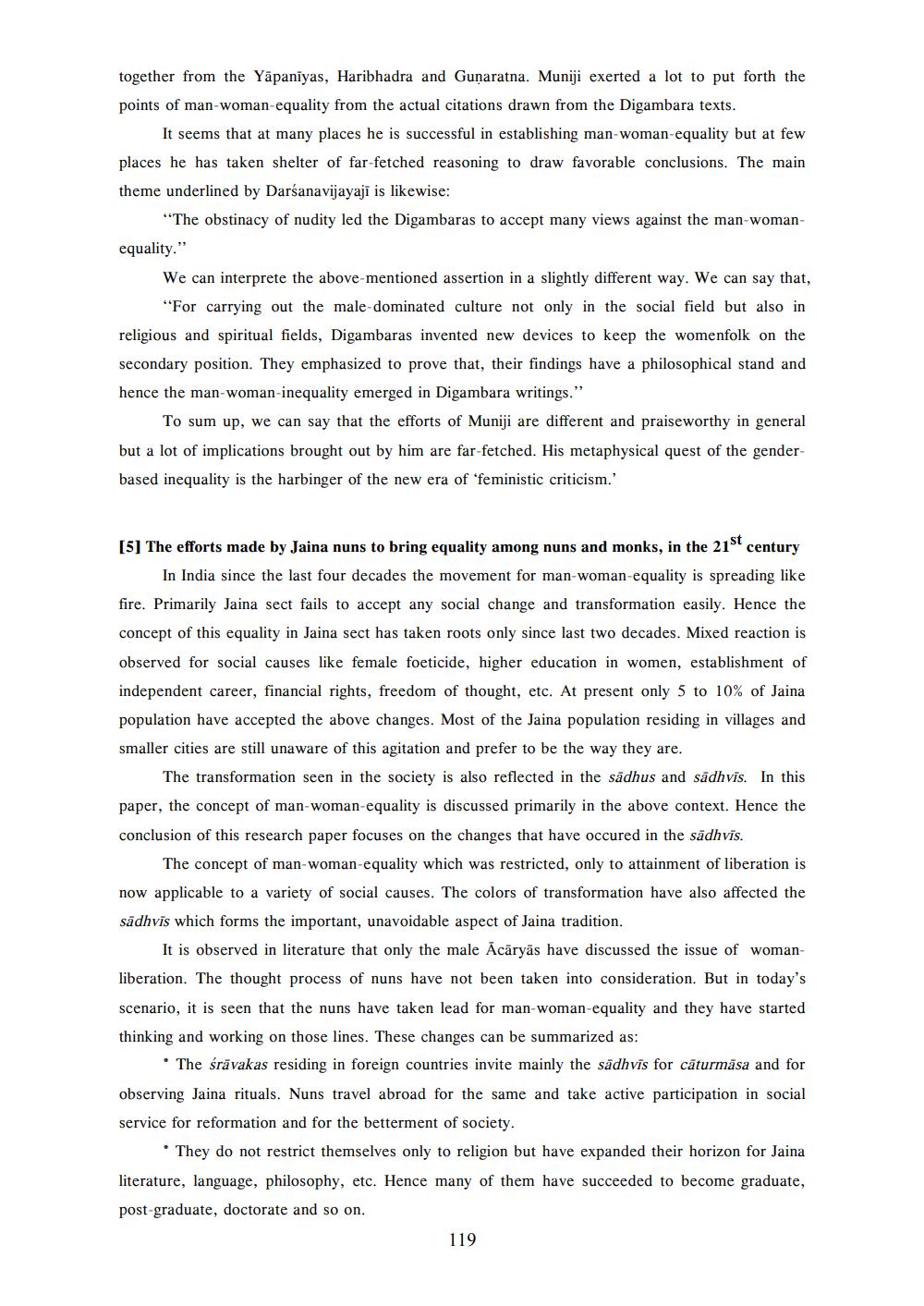________________
together from the Yāpanīyas, Haribhadra and Gunaratna. Muniji exerted a lot to put forth the points of man-woman-equality from the actual citations drawn from the Digambara texts.
It seems that at many places he is successful in establishing man-woman-equality but at few places he has taken shelter of far-fetched reasoning to draw favorable conclusions. The main theme underlined by Darsanavijayaji is likewise:
"The obstinacy of nudity led the Digambaras to accept many views against the man-womanequality."
We can interprete the above-mentioned assertion in a slightly different way. We can say that,
**For carrying out the male dominated culture not only in the social field but also in religious and spiritual fields, Digambaras invented new devices to keep the womenfolk on the secondary position. They emphasized to prove that, their findings have a philosophical stand and hence the man-woman-inequality emerged in Digambara writings."
To sum up, we can say that the efforts of Muniji are different and praiseworthy in general but a lot of implications brought out by him are far-fetched. His metaphysical quest of the genderbased inequality is the harbinger of the new era of 'feministic criticism.'
[5] The efforts made by Jaina nuns to bring equality among nuns and monks, in the 21st century
In India since the last four decades the movement for man-woman-equality is spreading like fire. Primarily Jaina sect fails to accept any social change and transformation easily. Hence the concept of this equality in Jaina sect has taken roots only since last two decades. Mixed reaction is observed for social causes like female foeticide, higher education in women, establishment of independent career, financial rights, freedom of thought, etc. At present only 5 to 10% of Jaina population have accepted the above changes. Most of the Jaina population residing in villages and smaller cities are still unaware of this agitation and prefer to be the way they are.
The transformation seen in the society is also reflected in the sādhus and sādhvis. In this paper, the concept of man-woman-equality is discussed primarily in the above context. Hence the conclusion of this research paper focuses on the changes that have occured in the sādhvis.
The concept of man-woman-equality which was restricted, only to attainment of liberation is now applicable to a variety of social causes. The colors of transformation have also affected the sādhvis which forms the important, unavoidable aspect of Jaina tradition.
It is observed in literature that only the male Acāryās have discussed the issue of womanliberation. The thought process of nuns have not been taken into consideration. But in today's scenario, it is seen that the nuns have taken lead for man-woman-equality and they have started thinking and working on those lines. These changes can be summarized as:
"The śrāvakas residing in foreign countries invite mainly the sādhvis for cāturmāsa and for observing Jaina rituals. Nuns travel abroad for the same and take active participation in social service for reformation and for the betterment of society.
*They do not restrict themselves only to religion but have expanded their horizon for Jaina literature, language, philosophy, etc. Hence many of them have succeeded to become graduate, post-graduate, doctorate and so on.
119




